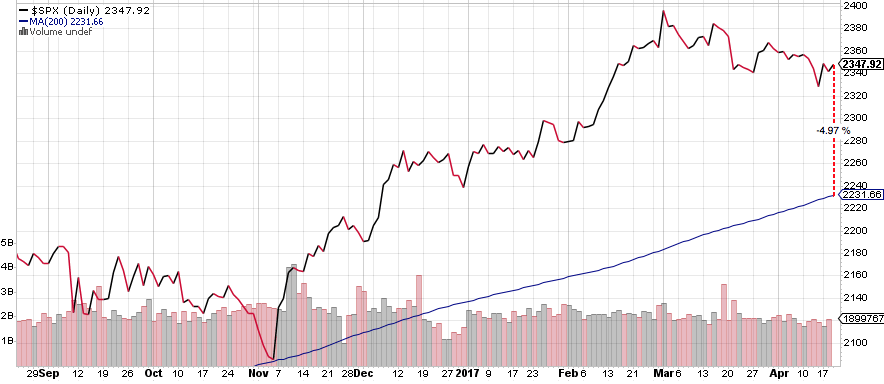 With our current raging bull market showing signs of last call before it finally comes back down to earth, there comes a thought that goes something like this: “How can I possibly profit in the case of a bear market?”
With our current raging bull market showing signs of last call before it finally comes back down to earth, there comes a thought that goes something like this: “How can I possibly profit in the case of a bear market?”
It’s actually very simple, and it can be even more profitable than a bull market. The beauty of this technique is that not many fund managers can use it, and I’d guess that 1 in 300 of them even know what it is.
While we may only be witnessing the start of a correction, this vital stock market tool can be your most profitable one yet. You really will be asking yourself: “How can a bear market/correction be this profitable?”
As we’ve already mentioned this week, the market is sounding some major warning alarms.
We spoke about all these alarms in our latest WSI TV episode in order to help you prepare for the possibility of a market correction—or what could even be the start of a bear market.
For most people, corrections and bear markets come with negative connotations, but if you understand the simple tool of short selling, you can milk the stock market more than you ever have before.
We don’t really talk about short selling too much, and that’s because during recent market conditions I’d strongly advise to stay away from short selling.
But with these recent alarms that were sounded by the market, we may soon see some extremely profitable short selling opportunities.
First, let me distinguish the difference between a correction and a bear market.
A market correction occurs when the stock market has stretched way too far ahead of itself, where a bear market has slipped past the downward correction, and is carrying on in a negative trend.
If you look at the chart of the S+P 500 ($SPX) below, I’ve outlined how far the market would have to fall in order to correct itself:
Here you’ll see that the market has to come down almost 5% in order to reconnect with its 200-day moving average (blue line).
The distance between the price and the 200-day moving average is a strong indicator of how stretched the market is, because it reveals how the market is doing compared to its past 200 days.
In order for the market to come down 5%, we’d see some devastating movement from thousands of individual stocks—devastating for those who know nothing about short selling, that is.
When a downward stock market correction occurs, it tends to happen a lot quicker than the moves it took to go in an upward direction.
The saying on Wall Street is: The bull climbs up the stairs, and the bear falls out of the window.
This is the exact reason why bear markets—and downward corrections—are much more profitable than bull markets. They happen so much quicker.
So, in order to rake in these profits from any possible downward movement, you need to understand the simple tool that is short selling.
When you short sell a stock, you’re simply betting on the price of it to move down. As I’ve mentioned, you should only short sell stocks when the entire market is moving down.
In that same sense, you should only buy stocks when the market is moving up.
But how do you find the right stocks to short sell?
Well, any trading techniques you currently use can be used to find stocks to short. Only in this case you flip your techniques upside-down.
If you use the 200-day moving average in one of your techniques, you’d use that same line but you’d want to stick to stocks that are underneath it instead of over it.
If you like to look at volume in your trading techniques, you’d be looking for heavy selling volume (the red bars) as opposed to heavy buying volume (the grey bars).
It all works the same as if you were buying, only short selling profits happen much quicker.
In order to place a short sell order with your broker, you’d do exactly the same as you normally would, except you’d obviously say “short” instead of “buy.”
For example, “I’d like to short 100 shares of AAPL at market price.”
When you short sell, you basically sell the shares to your broker, and he pays you the amount you traded—shorting 100 shares of Apple (AAPL) at $141 per share would pay you around $14,000.
If AAPL then falls to $100, you’d close your trade with your broker and take a $4,100 profit.
You’re essentially borrowing the shares from your broker, selling them to him when you open the short sale, then buying them back at a much cheaper price. You don’t keep the shares after this—unless you choose to, but the whole point of short selling is to make that quick $4,100 payout.
As the market currently waivers in no man’s land, there’s a big chance we could see a decently sized correction that could be followed by a bear market.
Again, these are the most profitable conditions for you, now that you understand how to short sell, and you shouldn’t take any notice of the people around you who think these conditions always have to be negative.
You’ll soon see that bear markets and downward corrections could provide you with the supersized profits that could allow you to live a financially free life.





